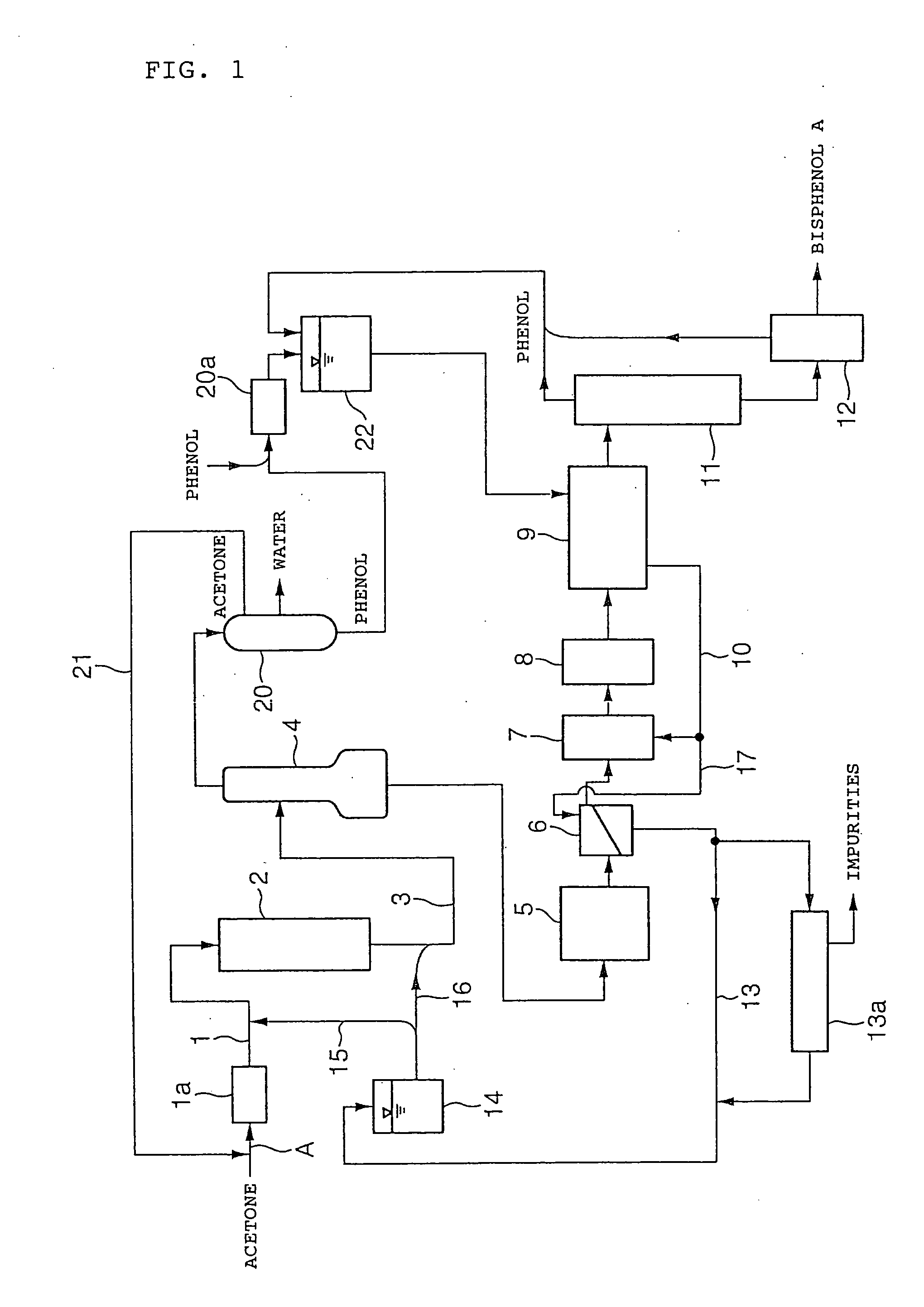Process for the production of bisphenol A.
- Summary
- Abstract
- Description
- Claims
- Application Information
AI Technical Summary
Benefits of technology
Problems solved by technology
Method used
Image
Examples
example 1
[0061] Bisphenol A was produced by a pilot plant having a flow pattern shown in FIG. 1. The methanol concentration in fresh acetone was 300 ppm. A distillation column having an ordered packing (“MC Pack MC350S” produced by Ryoka Forward Co., Ltd.) with a theoretical plate number of 35 was used as methanol removing device 1a, and under a pressure of 410 kPa, a mixture of fresh acetone and recovered acetone from line 21 were supplied from the 25th plate from the top.
[0062] Used as the catalyst in the reactor 2 was a sulfonic acid type cation exchange resin (AMBERLYST 31, produced by Rohm & Haas Company) with 20 mol % of sulfonic groups being partially neutralized with 2-(4-pyridyl)ethanethiol. The resin was packed to a volume of 3.4 m3. The new feed of acetone was 60 kg / hr. The feed of recovered acetone from line 21 was 10 kg / hr on the average. The flow rate in line 16 was adjusted so that the feed of the mother liquor from line 15 to line 1 would become constant at 1,608.8 kg / hr.
[0...
PUM
| Property | Measurement | Unit |
|---|---|---|
| Fraction | aaaaa | aaaaa |
| Fraction | aaaaa | aaaaa |
| Percent by mass | aaaaa | aaaaa |
Abstract
Description
Claims
Application Information
 Login to View More
Login to View More - R&D
- Intellectual Property
- Life Sciences
- Materials
- Tech Scout
- Unparalleled Data Quality
- Higher Quality Content
- 60% Fewer Hallucinations
Browse by: Latest US Patents, China's latest patents, Technical Efficacy Thesaurus, Application Domain, Technology Topic, Popular Technical Reports.
© 2025 PatSnap. All rights reserved.Legal|Privacy policy|Modern Slavery Act Transparency Statement|Sitemap|About US| Contact US: help@patsnap.com

